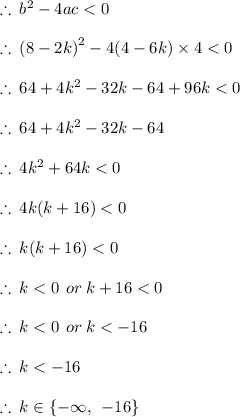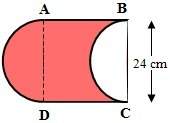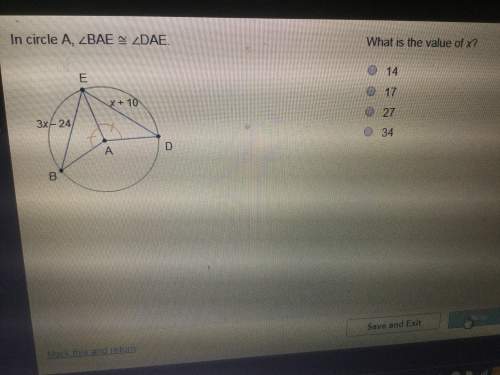
Mathematics, 17.02.2020 14:44 amandapill
11
Given that
f(x) = (4 – 6k)x² + (8 – 2k)x + 4,
where k is a negative number,
(i) explain whether the coefficient of
x? is positive or negative.
(ii) find the range of values of k for
which f(x) = 0 has no real roots.
please help ♀️♀️

Answers: 1
Another question on Mathematics

Mathematics, 21.06.2019 12:30
As soon as look at the parallelogram abcd shown below: the table below shows the steps to prove that if the quadrilateral abcd is a parallelogram, then its opposite sides are congruent: which choice completes the missing information for reason 5 in the chart? (6 points) congruent parallelograms congruent triangles similar angles similar triangles
Answers: 1

Mathematics, 21.06.2019 18:30
Write the slope-intercept form of the line that passes through the point (1, 0) and is parallel to x - y = 7. t
Answers: 2

Mathematics, 21.06.2019 19:30
Acar started driving from city a to city b, distance between which is 620 miles, at a rate of 60 mph. two hours later a truck left city b and started moving towards city a at a rate of 40 mph. how many hours after the truck's departure will the two meet?
Answers: 1

Mathematics, 21.06.2019 20:10
What additional information could be used to prove abc =mqr using sas? check all that apply.
Answers: 1
You know the right answer?
11
Given that
f(x) = (4 – 6k)x² + (8 – 2k)x + 4,
where k is a negative number,
(...
Given that
f(x) = (4 – 6k)x² + (8 – 2k)x + 4,
where k is a negative number,
(...
Questions

Health, 06.09.2019 20:30




Biology, 06.09.2019 20:30

Mathematics, 06.09.2019 20:30




Biology, 06.09.2019 20:30

Mathematics, 06.09.2019 20:30



Biology, 06.09.2019 20:30











